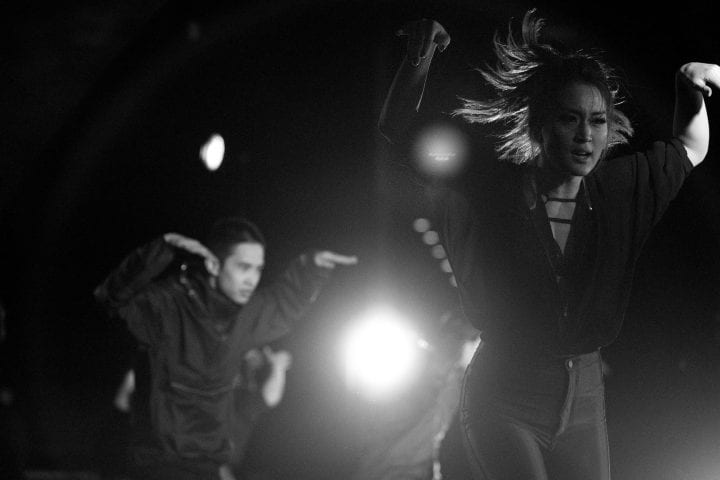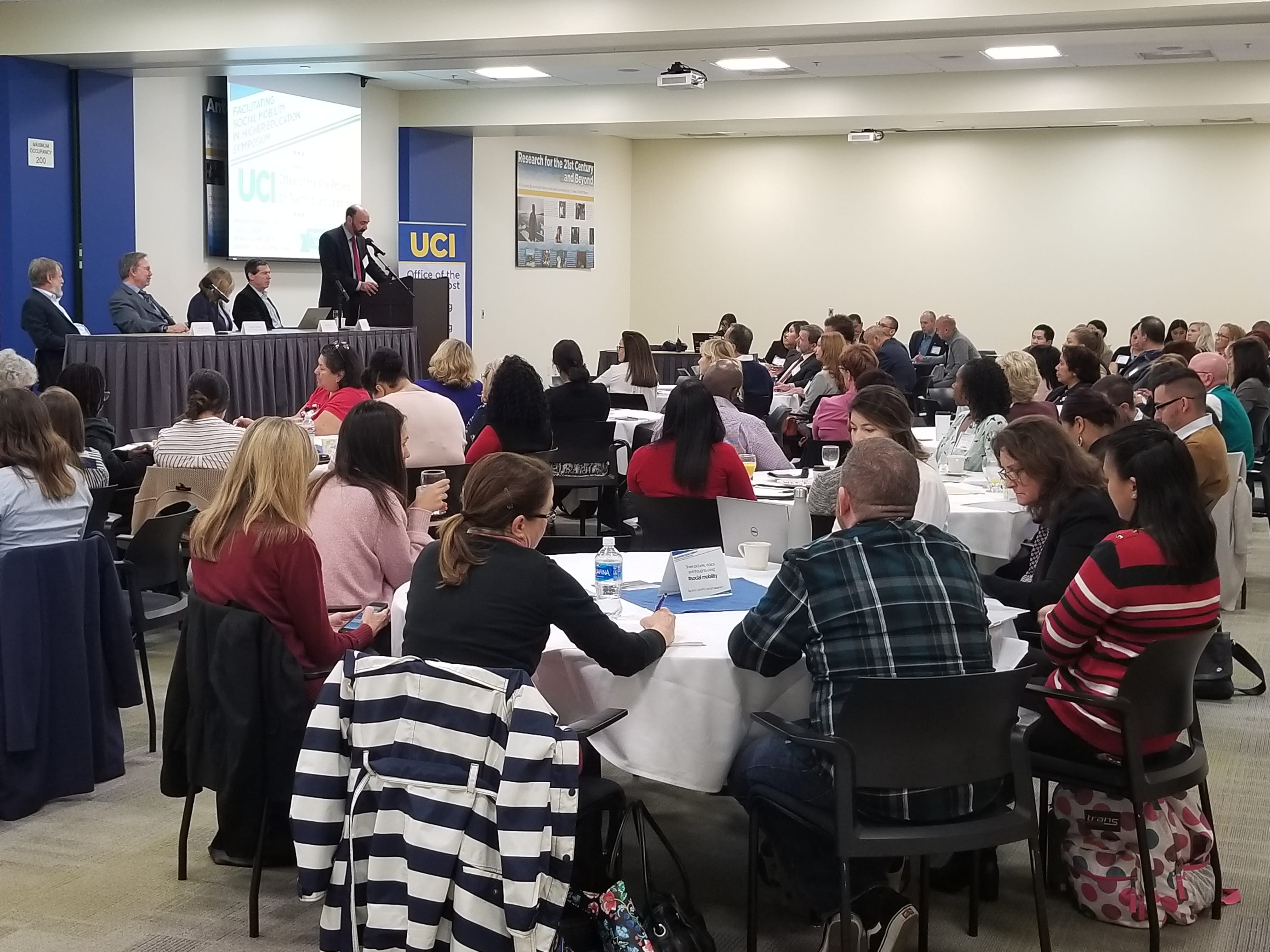Majoring in Kaba Modern
Hip-hop crews come of age on campus

Anyone who belongs to Kaba Modern, one of the top dance crews to emerge from UC Irvine, invariably pulls a lot of all-nighters. Instead of hitting the books, though, members spend long hours popping, breaking and locking – that is, honing their hip-hop moves in order to win competitions and perhaps even land a career in dance.
“We go over and over technique,” says Dana Roy, a fifth-year dance major who joined Kaba Modern her freshman year. “We usually practice three days a week, but if we’re getting ready for a competition or performance, it’s five or six hours every day. Sometimes we literally go until the sun rises.”
Kaba Modern’s synchronized style has helped put UC Irvine on the hip-hop map. The troupe gained fame in 2008 when six members vied for the title of “America’s Best Dance Crew” on MTV, coming in third. It’s won prestigious competitions with seamless performances, taking first at the Prelude Norcal Urban Dance Competition in 2011 and second in 2012 and placing first in the U.S. at Hip Hop International in 2007 and third in 2008.
“The thing that sets us apart is that we’re a big family. We know how to work together,” says Darren Wong ’11, a Kaba Modern member since 2008 and the group’s artistic director in 2011. “Our style changes every year, but we’re known for our popping and isolations – controlling every limb of your body. We’re known for our versatility.”
Kaba Modern was created in 1992 by freshman Arnel Calvario as an offshoot of Kababayan, a Filipino American student group. Other UC Irvine crews soon followed, including Common Ground, Modern Completely Insane Anteaters (MCIA), Chinese Association Dance Crew (CADC) and B-Boys Anonymous (BBA).
“Kaba created a monster of a scene at UCI,” says troupe veteran Mike Song ’09, now a renowned choreographer/dancer. (See related story.) “It was the first collegiate dance crew. There weren’t any others at the time.”
The teams are popular performers on campus, where hip-hop dominates events such as Shocktoberfest. UC Irvine’s Bren Events Center is the site of the West Coast’s first major hip-hop competition, VIBE, created in 2005 by Asian American fraternity Lambda Theta Delta.
“The dance culture is unique to UCI,” says Song, who still visits Kaba Modern for training sessions. The collegiate crew has about 30 members, and more than half are UC Irvine students (the rest attend other Southern California schools or work). There’s also a kids’ group and Kaba Modern Legacy, featuring Song and other alumni.
While hip-hop thrives on UC Irvine’s walkways and impromptu stages, the movement has grown up independent of the university’s official dance programs.
“Hip-hop exists almost entirely outside the dance department,” says Jennifer Fisher, UC Irvine associate professor of dance. “We concentrate on concert dance – dance as a performance art in theaters. Kaba Modern and CADC are competitive crews, and art is not about winning a prize or being part of a social club. It’s about making people think, revealing something about the human condition or saying something about life.”
“It’s not that street-dance crews don’t do these things,” she adds. “They might, but when you dance to impress judges, that’s a different goal. Still, you don’t have to see dance in the theater to respect it. Everything doesn’t have to be art. Hip-hop is about being cool, creative and a bit belligerent.”
She’s been a fan since first seeing Kaba Modern perform on campus about eight years ago.
“I remember thinking, ‘This is technically stunning,’” Fisher recalls. “They have a commitment to virtuosity. They value unison. You have to rehearse endlessly to achieve that feeling of solidarity. They resemble a corps de ballet. I admire what they do tremendously.”
Hip-hop started in the 1970s with kids B-boying or break dancing on the streets of New York City. It’s evolved into a family of styles, such as popping (which includes tutting), locking, house, whacking and krumping.
“Hip-hop is a continuation of dances related to the African diaspora,” says Fisher, who specializes in dance history and has presented papers about hip-hop. “The movement began with disenfranchised black and Latino youth who had nothing but their bodies and creativity. The kids doing hip-hop today are not growing up in the same atmosphere. They’re kids who grew up on the mean streets of Irvine, but they still contribute to the field.”
From the start, hip-hop dancers have been influenced by popular culture, especially cartoons, kung fu movies and anime.
“Consider tutting,” says Fisher, referring to the angular arm and wrist moves that Song and his mother execute in their “Gangnam Style Mom” video. “It’s not King Tut – it’s Steve Martin’s imitation of King Tut.”
Hip-hop also encourages dancers to invent their own moves – to improvise, as Song and other Kaba Modern members do.
“The idea is that you take what you’ve been taught by the masters and immediately make it your own. That’s not true in modes of dance such as ballet, where you keep your mouth shut for a long time,” Fisher says.
That leaves some students torn between pursuing street dance or classic performance dance.
“Do they study jazz or modern dance at UCI, where they can take master classes with a legend like [Professor Emeritus] Donald McKayle, or do they get involved in hip-hop as an extracurricular activity?” Fisher says.
A few, such as Roy, attempt to do both. “I trained in jazz and ballet. I’d never done hip-hop before coming to UCI,” she says. “I joined Kaba Modern because I loved the energy they showed to the crowd.”
Roy was the group’s coordinator in 2010 and 2011 and now hopes her hip-hop experience will segue into a career. Other Kaba Modern standouts – Song, Jia Huang and Cindy Minowa among them – have worked on music videos, movies and TV shows and toured with such celebrities as Rihanna and Miley Cyrus.
As hip-hop continues to evolve, Fisher says, some dancers have started taking it to the level of art. It’s already crossing over into ballet, jazz and modern dance. Wong has even begun teaching a one-unit course at UC Irvine in break dancing, a sign of the growing acceptance of the style.
“We’re in the middle of history,” Fisher says. “I want to see someone take hip-hop and make it about longing, about wanting love in your life, about the human spirit. Then you’re getting into our territory.”
